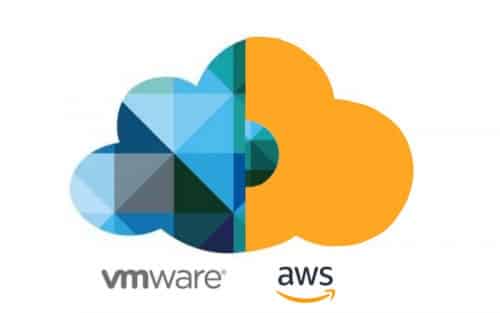VMware Cloud on AWS adoption has become increasingly popular among SMBs because of the advantages AWS provides. Not only does VMware’s cloud platform enable SMBs to achieve high availability, it also enables them to start small and scale quickly and efficiently. But SMBs must keep management and cost in mind.
VMworld 2019 marked the second anniversary of VMware Cloud on AWS. As expected, the number of available regions and features has continued to expand. With new product integrations such as Tanzu and Project Pacific, cloud platform capabilities are also expanding, which is good news for VMware Cloud on AWS adoption.
VMware Cloud on AWS isn’t exclusive to a select few
Enterprises were the first to adopt VMware Cloud on AWS, but commercial and SMB organizations have started to incorporate it as well. This is because VMware’s cloud platform cost of entry is four hosts. For smaller shops, this isn’t an uncommon quantity of hosts. Although the cost might seem high, building out a data center can be even more expensive.
VMware Cloud on AWS is an enterprise-based service, but its ability to scale to SMB and commercial levels is groundbreaking for several reasons. Non-enterprise organizations often require many of the same features as enterprises to compete in the IT market, but those features are simply out of reach for smaller organizations. VMware Cloud on AWS provides SMBs with the capabilities they require, such as low-risk, accelerated cloud migrations at scale.
VMware doesn’t disclose its customer base or size of VMware Cloud on AWS. But VMware’s cloud platform does have compliance certifications in financial, healthcare and government industries, which is a good indicator of the market.Although VMware Cloud on AWS is an enterprise-based service, its ability to scale to the SMB and commercial levels is groundbreaking for several reasons.
VMware Cloud on AWS includes the advanced vSphere technology that is familiar to many. The learning curve simply isn’t the same as native AWS features, and this gives IT administrators the flexibility to start simple or advanced. VMware Cloud on AWS is a good platform for both SMBs and enterprise-level data centers, because admins can scale as needed.
VMware Cloud on AWS adoption and migration
VMware Cloud on AWS adoption and migration wasn’t discussed much at VMworld 2019, but it’s important to keep an eye on. The number of organizations adopting VMware Cloud on AWS has increased four times the amount since its launch in 2017, and the amount of VMs has increased nine times the amount following launch. This growth eases implementation and cost concerns for organizations that have yet to adopt VMware’s cloud platform.
As organizations get more comfortable with VMware Cloud on AWS, it opens a gateway to other AWS-native features. For many companies, rewriting or forklifting applications into AWS in reasonable timeframes just isn’t possible. However, as VMware’s cloud platform continues to grow, the cloud aspect is no longer an intimidating proposition. This has some additional sway, especially when comparing VMware Cloud on AWS to native AWS. Essentially, data transfer is free in most cases. This is a key factor in the modernization of applications and services from traditional data centers to cloud services.
Take advantage of native AWS offerings
As DevOps and containers continue to grow in modern IT, so does the need for corresponding platforms and management tools. The ability to take advantage of native AWS features when an organization is ready is key. VMware stresses that VMware Cloud on AWS gives admins the flexibility to cash in on native AWS offerings on their schedule, and not when the data center’s or hardware’s need of a refresh dictates it.
This is essential for the enterprise, but it’s even more important for SMB and commercial organizations that have more limited resources. They still need to be competitive but must also be able to juggle their budgets a bit more cautiously and without a large upfront investment.
The future of IT
The challenge that IT will face in the future isn’t migrating to the cloud. Rather, it’s keeping track of where workloads live. As virtual environments grow in size and complexity, it becomes harder to manage all the moving parts, such as VMs, containers and hosts. SMBs must take this into consideration with VMware Cloud on AWS adoption.

